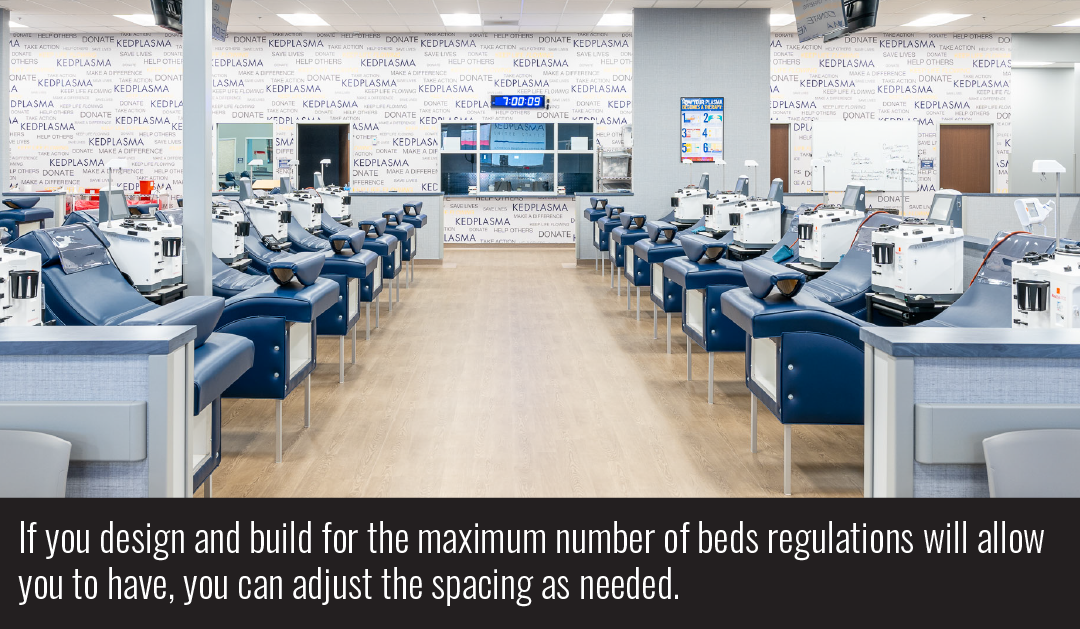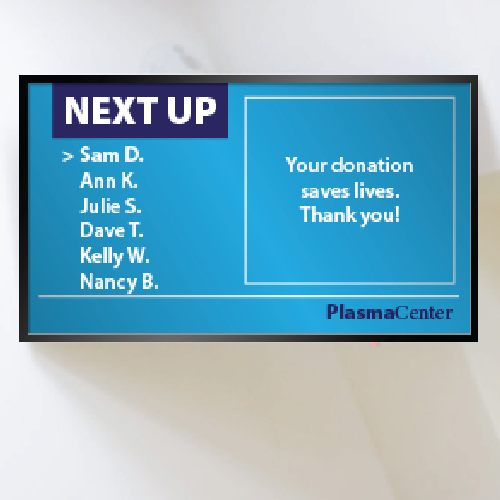
With the recent shortage of plasma, many collection centers are seeing 30-40% more donors. Here’s how to prepare for this to happen to you.
Sure, you can reduce what you pay donors to discourage new people, but a better solution is to make your center capable of serving more customers (donors).

1. Plan for growth with the building
When we design a new plasma collection center, we hope for a “home run,” but we don’t really know if it will draw 600 or 1,200 donors per week. You can build big, but you don’t want excess capacity that will never be used.
One solution is to build excess parking along an axis with the building, so a building addition could be added later.
Plan for growth with excess plug-ins, donation stations
We build for the maximum number of beds regulations allow for your space—with the number of outlets you MIGHT need. It is always our practice to install circuit boards with excess circuits, should you need more electricity.


2. Look at operating hours
As the number of donors increases, consider the following:
- Expanding your hours
- Making sure your parking lot is well-lit in the evenings
- Increasing staff and training
- Looking at the protocols for higher volumes of plasma
- Automating data entry and appointment scheduling—could you allow donors to schedule their time from their computer at home?
- Improving communication with donors—this might include:
- sending voicemails or emails during slow times to let donors know there is a minimal wait
- having a means of letting donors in the waiting room know how many donors are ahead of them
- using dynamic pricing to increase donor fees during slow times

3. Processes and physical layout
More plasma might mean more staff to process the plasma and freeze it.
Look at the efficiency of your reception/waiting areas:
-
- Can people be moved through the process more efficiently?
- Do you have enough seating, interview booths, reception staff to handle an increase in donors?
Review all your processes. Once you have implemented every possible efficiency measure, it is time to expand the building.
Back To Top
4. Improving the donation experience
Every Stough center is built to enhance the donor experience. These interior elements make your center feel more welcoming:
- Bright colors
- Adequate light: make sure bulbs are replaced promptly when they go out; use indirect LED fixtures for a warm light
Out of respect for your customers (donors) and their time, make them feel cared for:
- Have a greeter at the door to ask people if they are new, explain process to them
- More frequent cleanings so there are no smudges, fingerprints, dust or spiderwebs
- Make your outdoor smoking area available to donors, and have a means to let them know it is their turn to donate so they know when to come back into the building
Monitor key performance indicators like donor satisfaction, wait times, skill of staff., etc. Surveys can also help you measure how staff members are doing (workload, breaks, environment). You can give small gifts (better gifts for staff than donors) as incentives for people to fill out surveys. Donors could fill out a 3-question survey after each donation and get a scratch-off; staff could fill out a 10-question every quarter and get 2 hours off with pay.
Following these steps, your plasma center can handle increased production while maintaining donor satisfaction.
Back To Top